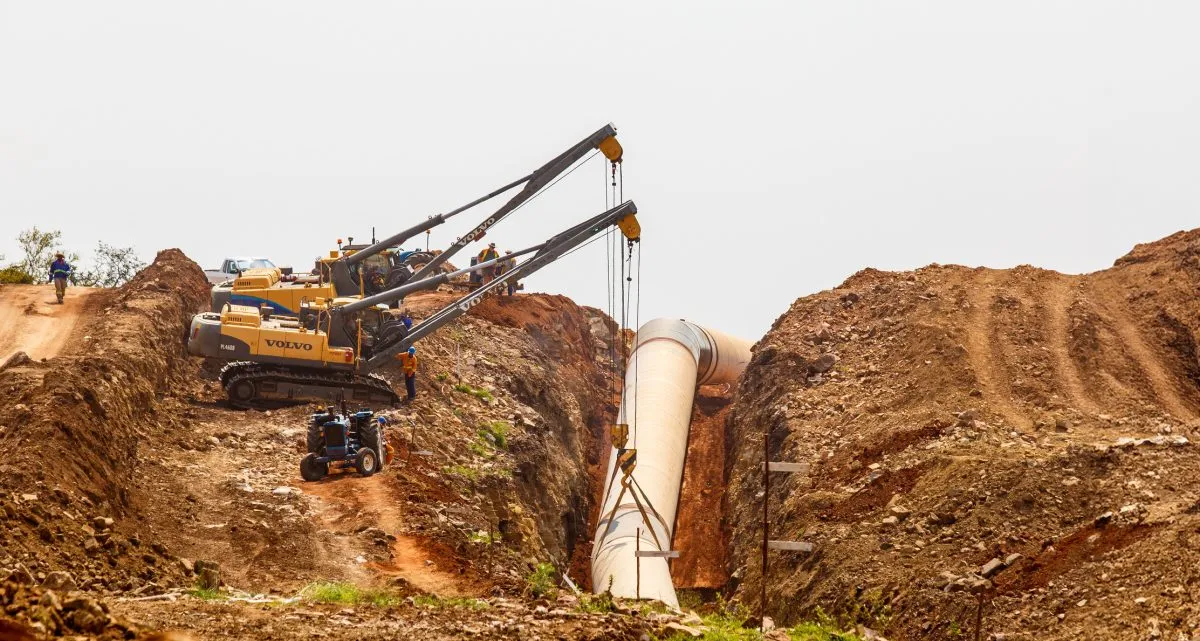This article was produced with the support of AUDA NEPAD
The focus of PIDA is clear: to build resilient, inclusive infrastructure that will serve as a foundation for Africa’s economic transformation. This means not only physical infrastructure such as roads, railways, and ports but also digital and energy systems that facilitate regional integration, trade, and sustainable development. At the heart of these discussions was the realisation that infrastructure is not just about connectivity – it’s about creating opportunities for all Africans to participate in a shared economic future.
A strategic framework
PIDA, the Programme for Infrastructure Development in Africa, has long served as Africa’s strategic blueprint for infrastructure development. The ambition of Goal 10 of Agenda 2063 – “World-Class Infrastructure criss-crosses Africa” – is nothing short of transformative. By establishing robust infrastructure networks that span borders and sectors, PIDA is designed to connect the continent in ways that will foster economic growth, reduce poverty, and enhance social integration. From the railways that will link countries in East and West Africa, to the energy grids that will power industries and homes across the continent, PIDA represents the future Africa is striving to build.
However, the road to achieving this vision is fraught with challenges. Africa’s infrastructure deficit remains vast, with critical gaps in water, energy, transportation, and ICT. Addressing these gaps requires bold leadership, innovative financing mechanisms, and multi-stakeholder cooperation. The progress made through initiatives such as the NEPAD Infrastructure Project Preparation Facility (NEPAD-IPPF) and the PIDA service delivery mechanism (SDM) provides a glimmer of hope. These mechanisms have helped move PIDA projects closer to financial closure, ensuring that infrastructure projects are not just conceptual but are actively moving through the implementation pipeline.
The need for innovative financing
There is an urgent need to diversify and innovate Africa’s financing approaches for infrastructure. Traditional financing mechanisms, such as government funding and international aid, are no longer sufficient to meet the continent’s massive infrastructure needs. Great emphasis should be placed on public-private partnerships (PPPs), impact investments, and blended finance schemes as necessary vehicles for mobilising the capital required for these large-scale projects.
The private sector, particularly in emerging markets, has been slow to engage with Africa’s infrastructure challenges due to perceived risks. However, innovative financing structures that combine public support with private investment can offer a solution. By using instruments like concessional finance, guarantees, and blended finance, stakeholders can de-risk projects and encourage private sector participation. Moreover, efforts must be made to streamline regulatory processes and create an environment where investor confidence can thrive.
One of the key challenges in financing infrastructure is the need to reduce the cost of capital. High financing costs remain a significant barrier to infrastructure development in Africa. This issue must be addressed by creating favourable conditions for investors, whether through regulatory reforms or financial instruments that help absorb risks and reduce costs.
Building sustainable, resilient infrastructure
Resilient infrastructure is not just about physical durability – it’s about ensuring that infrastructure projects can withstand the impacts of climate change, political instability, and economic fluctuations. There is a pressing need for climate-resilient infrastructure that can adapt to changing environmental conditions. From floods and droughts to rising temperatures and shifting weather patterns, climate change poses a significant threat to Africa’s infrastructure investments. As the impacts of climate-related disasters become more severe, the importance of adaptive and mitigation measures grows.
Transboundary water resource management plays a critical role as a cornerstone of sustainable development. In many parts of Africa, water resources span multiple countries, making cooperation on management and investment vital. The call to increase investments in the water sector, particularly for transboundary water projects, reflects the broader understanding that infrastructure development must prioritise sustainability, equity, and environmental responsibility.
Moreover, infrastructure must be inclusive. Too often, the development of large-scale infrastructure projects neglects the needs of marginalised groups, including women, youth, and people with disabilities. Ensuring that vulnerable groups have a stake in infrastructure development is not only a matter of equity but also a driver of economic growth. The involvement of local communities, particularly indigenous knowledge, should be central to the design and implementation of infrastructure projects. This will ensure that infrastructure meets the diverse needs of African societies while fostering a sense of ownership and inclusion.
Digital transformation
In the digital age, infrastructure is no longer limited to physical structures alone. Digital infrastructure – comprising data centres, digital IDs, and ICT connectivity – is integral to Africa’s future growth. The African Continental Free Trade Area (AfCFTA), which seeks to create a single market for goods and services across Africa, will rely heavily on robust digital infrastructure to facilitate trade, communication, and the movement of people and goods.
In addition, digital solutions offer a powerful tool for improving the efficiency and effectiveness of transport infrastructure, allowing for better management of logistics, reducing congestion, and enhancing the safety and reliability of transportation networks. With increasing investments in digital solutions, particularly through initiatives like the African Union’s Digital Transformation Strategy, the continent stands to make significant strides in its quest for interconnectedness and growth.
The role of youth and SMEs
The continent’s youth, representing a significant portion of the population, are key drivers of innovation, entrepreneurship, and job creation. By creating opportunities for youth to participate in infrastructure development through training, funding, and mentorship, African countries can unlock immense potential. Similarly, micro, small, and medium-sized enterprises (M-SMEs), which form the backbone of many African economies, must be better supported to participate in the infrastructure sector.
A roadmap for Africa’s future
Africa’s future is inextricably linked to the development of its infrastructure. From financing and climate resilience to digital transformation and inclusivity, the continent faces a complex array of challenges that require bold, coordinated action.
Through the continued commitment of governments, development partners, the private sector, and civil society, Africa can build the resilient, inclusive, and sustainable infrastructure necessary for its growth and integration. The future of Africa is indeed one that is interconnected – both physically and digitally – laying the groundwork for a prosperous and sustainable future for all.
Second priority action plan
Amine Idris Adoum, director of economy, infrastructure, industrialisation, trade and regional integration, has been a driving force behind the implementation of the second priority action plan of the PIDA programme – PIDA-PAP 2, which is currently under way. The PIDA-PAP 2 contains 69 large-scale projects expected to cost more than $160bn over its ten-year implementation plan. Despite the laudable achievements and the learning curves over the first ten-years implementation of PIDA faced challenges of projects financing and implementation. Out of over 430 projects in PIDA PAP 1, about 50% of the projects failed to reach the construction stage while 30% failed to go beyond the feasibility stage.
However, successes were recorded in the transport sector where 16,066 kilometres of roads and 4,077 kilometres of railways have been developed, strengthened by nearly 120 Single Border Posts. In the energy sector, 3,506 kilometres of transmission lines were installed, lighting the way for 232 GW of electricity and connecting African electrical networks. On Transboundary Water Management several achievemnets were realised including the Lesotho Highlands project which has transferred approximately 17,990m cubic meters of water to South Africa. On ICT, the digital infrastructure has seen an increase with a capacity of 9 Terabits, and 17 nations are now digitally interconnected. Given the paramount importance of cybersecurity, the AU Convention on Cybersecurity has been established and ratified by 15 states.
For more information, please email [email protected], [email protected] or visit www.nepad.org

 Sign in with Google
Sign in with Google 



